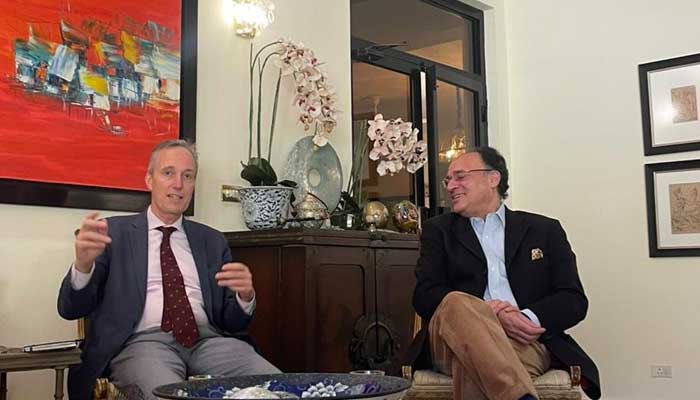Pakistan may become $1tr economy by 2035: World Bank vice president


- Pakistan should focus on under-controlled factors: Raiser.
- WB VP says $20bn loan for Pakistan “conditional, indicative”.
- “Pakistan has capabilities that could be used to attract investment.”
LAHORE: World Bank Vice President for South Asia Martin Raiser has said that Pakistan has the potential to become a trillion-dollar economy by 2035 with an annual growth rate of 7%.
In a statement, Raiser said that long-term projections were difficult, but if Pakistan seriously implemented its domestic economic recovery plan, the target could easily be achieved.
Achieving the target was quite possible; however, key reforms and strong policies were needed for that, he said, mentioning that the World Bank had promised to provide $20 billion to Pakistan in the next 10 years.
However, he clarified that the amount would be provided according to Pakistan’s economic capacity and reforms.
The vice president further said that Pakistan needs to carry out key economic reforms for a 7% annual growth rate.
He added that the country should focus on the factors that were within its control, especially to attract foreign investment and improve trade relations.
The official said that he had consulted representatives of various political parties and civil society in Pakistan to build consensus on economic plans.
He also explained that the $20 billion loan for Pakistan was conditional and indicative, which would be in line with the size of the country’s economy and its repayment capacity.
Raiser stressed that Pakistan had many capabilities that could be used to attract investment.
Meanwhile, the vice president also held a meeting with Finance Minister Muhammad Aurangzeb to discuss the World Bank’s support for key economic and tax reforms and implementation of the fiscal pact to improve revenue collection and spending efficiency.
World Bank’s $20bn funding programme
Last week, the World Bank launched its multi-billion funding programme, Country Partnership Framework for Pakistan from FY26 to FY35, which Prime Minister Shehbaz Sharif termed as a “timely intervention” to help Pakistan cope with several challenges, including economy, poverty and climate change crisis.
During the ceremony, Vice President Raiser pledged the World Bank’s continued assistance to Pakistan and highlighted that six sectors were being targeted under the 10-year framework.
The international financial institution unveiled its plan for Pakistan earlier this month, pledging $20 billion in areas including clean energy and climate resilience.
The World Bank said that policy and institutional reforms to boost private sector growth and expand fiscal space for government investment in crucial areas would also be key.
“We are focused on prioritising investment and advisory interventions that will help crowd much-needed private investment in sectors critical for Pakistan’s sustainable growth and job creation, including energy and water, agriculture, access to finance, manufacturing and digital infrastructure,” said Zeeshan Sheikh, the bank’s International Finance Corporation Country Manager for Pakistan and Afghanistan in a statement.
The World Bank has currently committed about $17 billion to Pakistan for 106 ongoing projects.
The country has teetered on the brink of economic crisis for several years and economists and international financial institutions have called for major economic reforms.
Pakistan is currently under a $7 billion International Monetary Fund bailout programme, which requires the country to boost government revenues and shore up external sources of financing, much of which comes from loans from China and Gulf nations.



